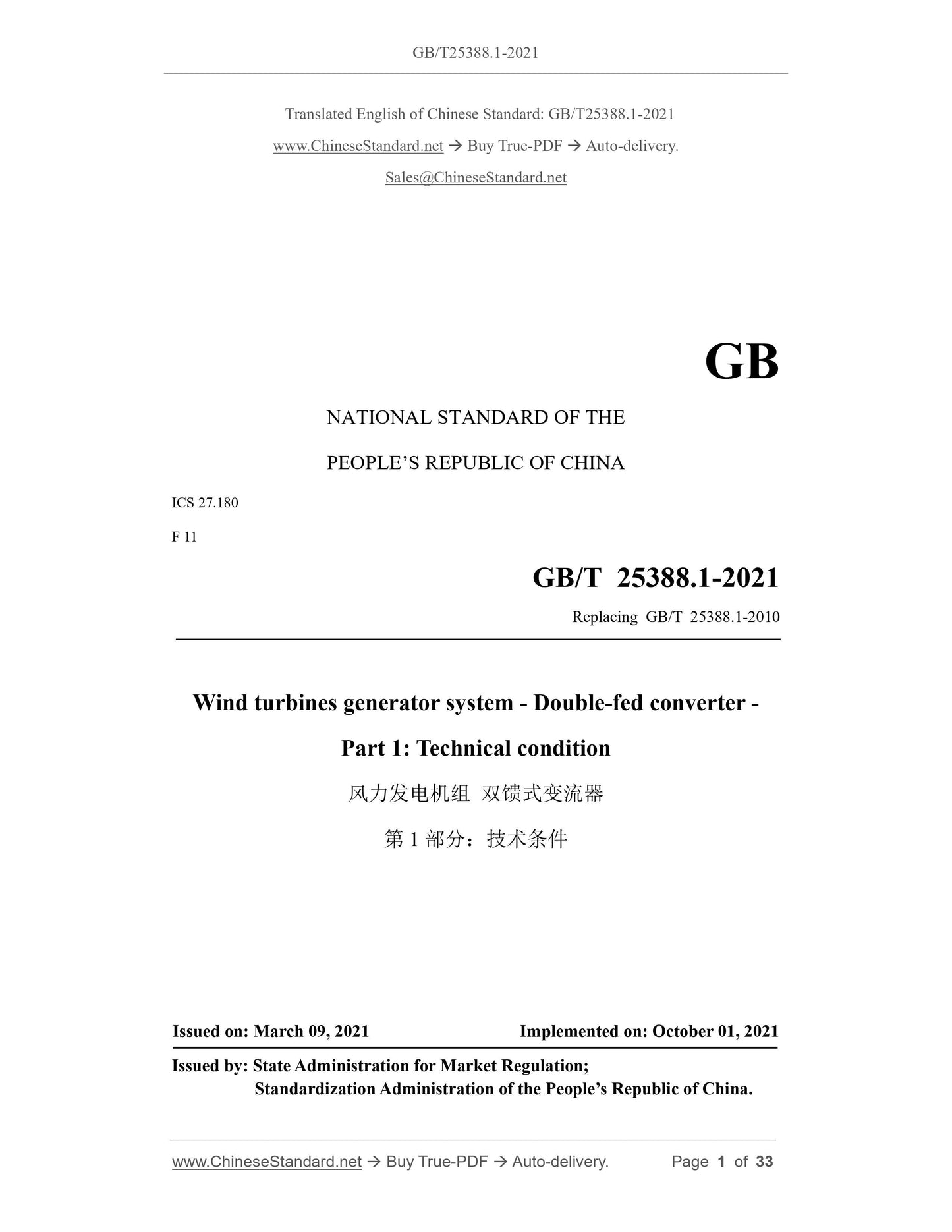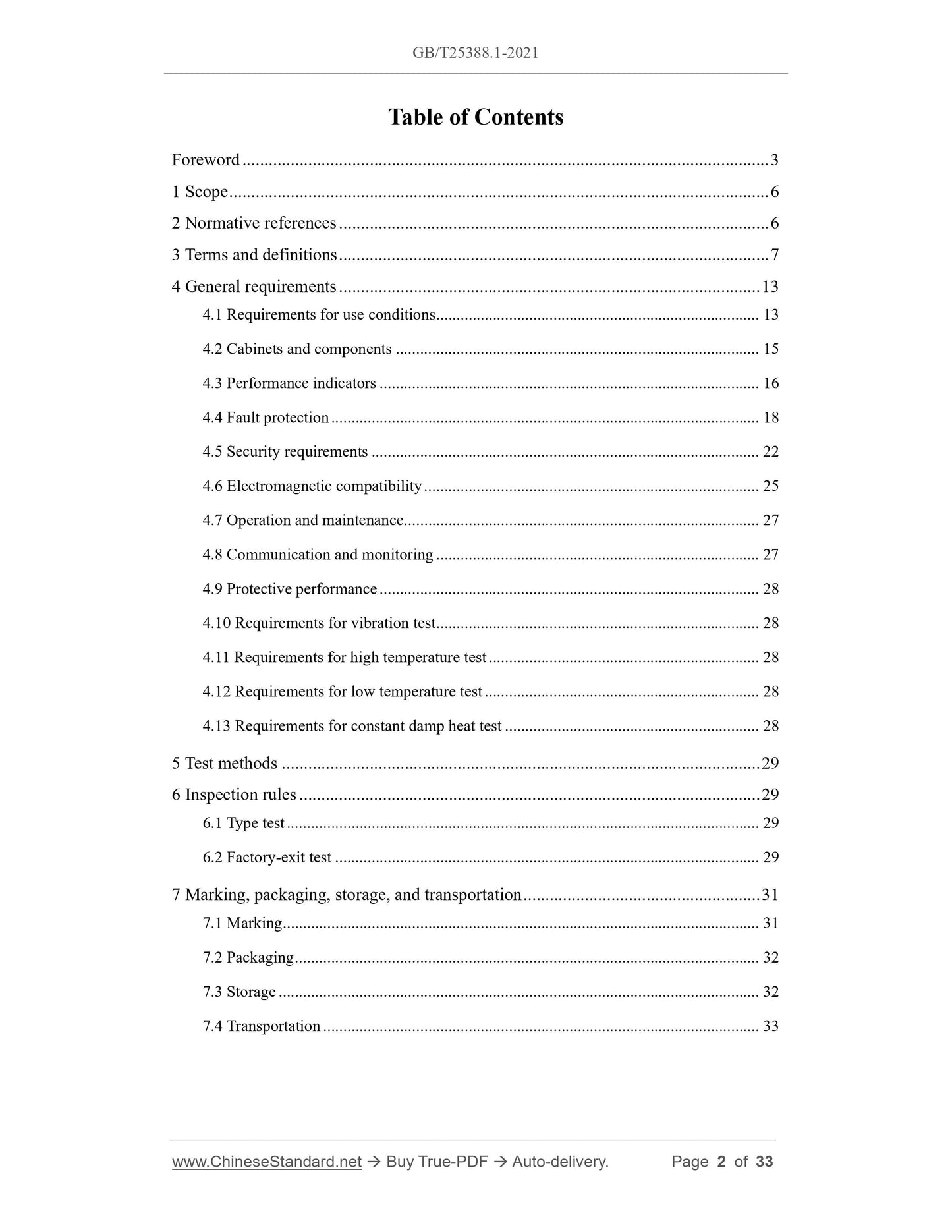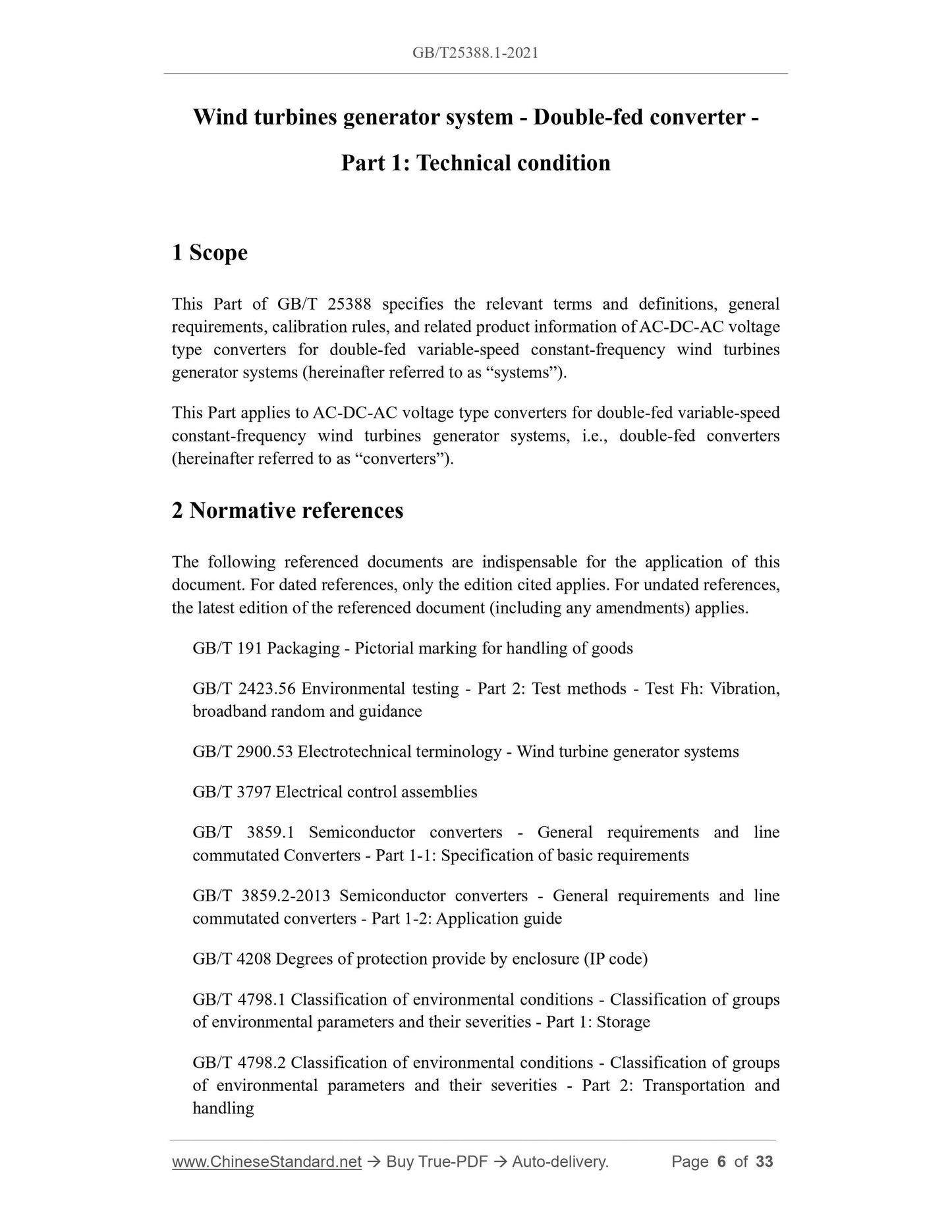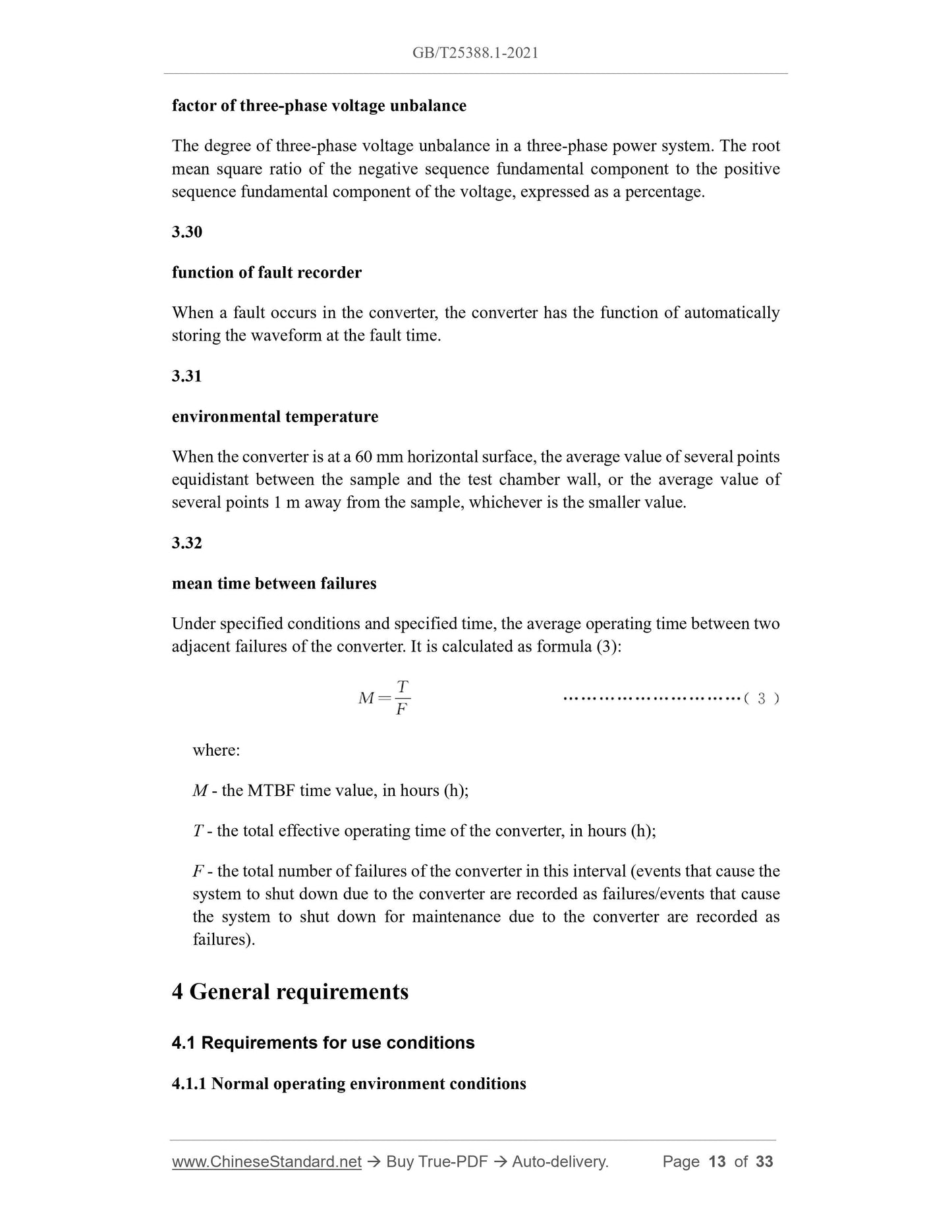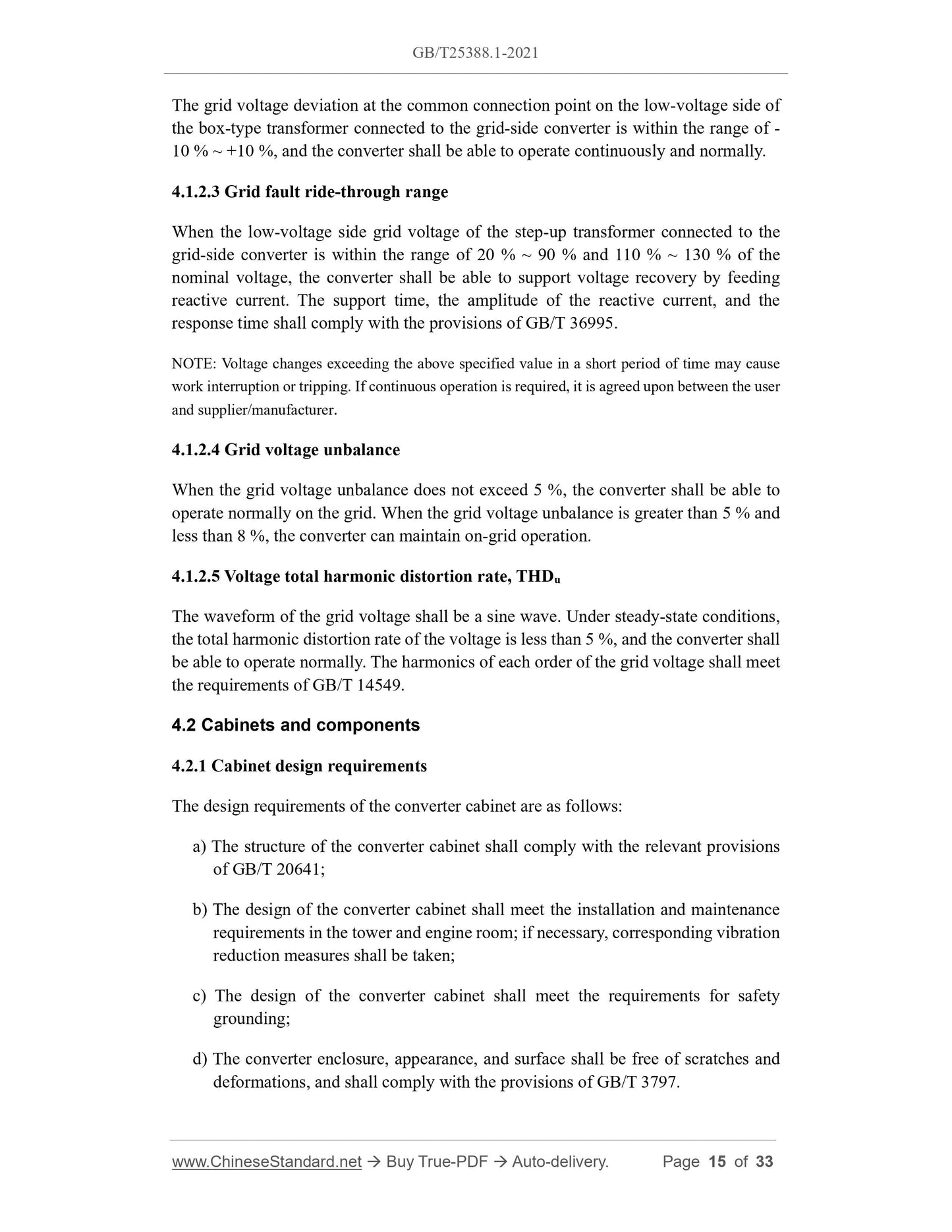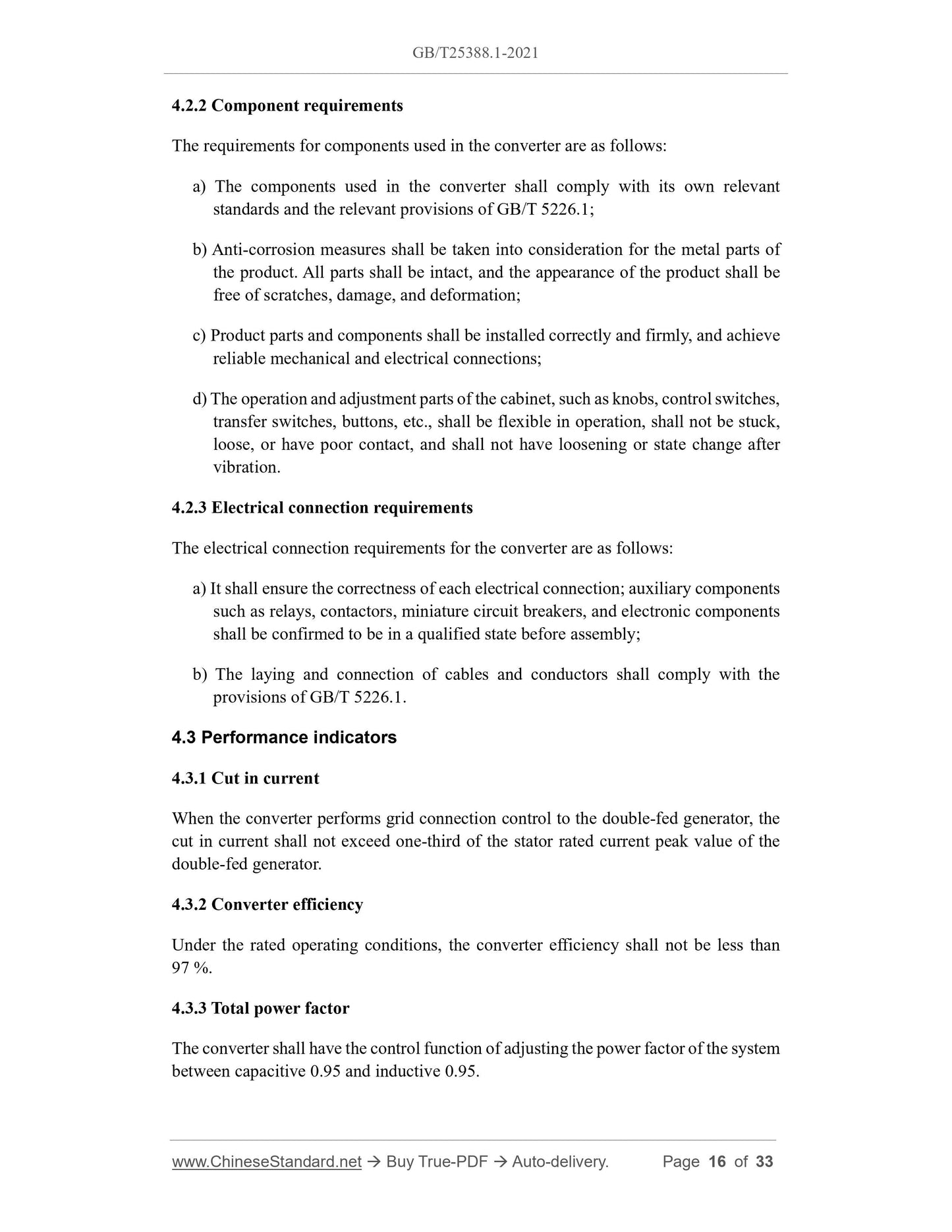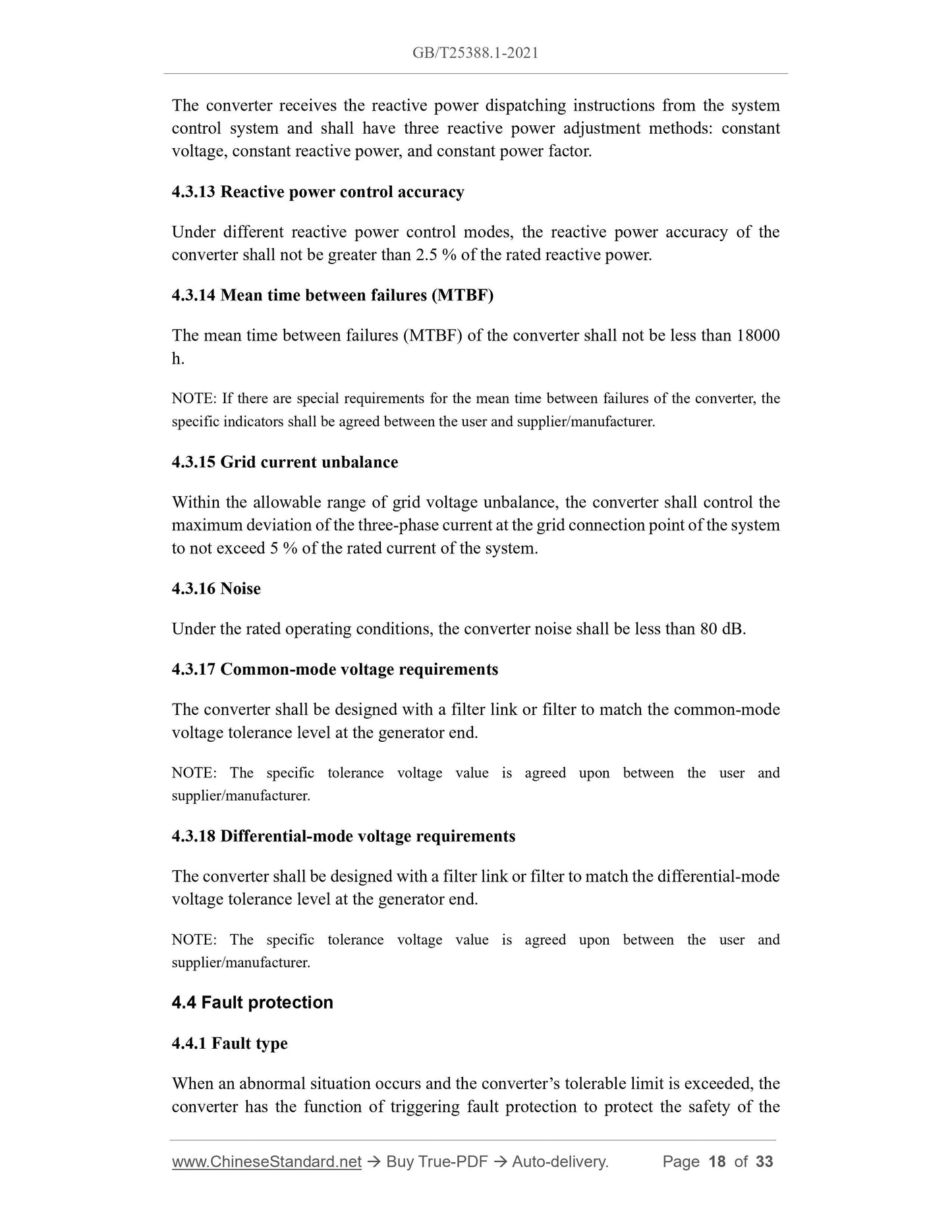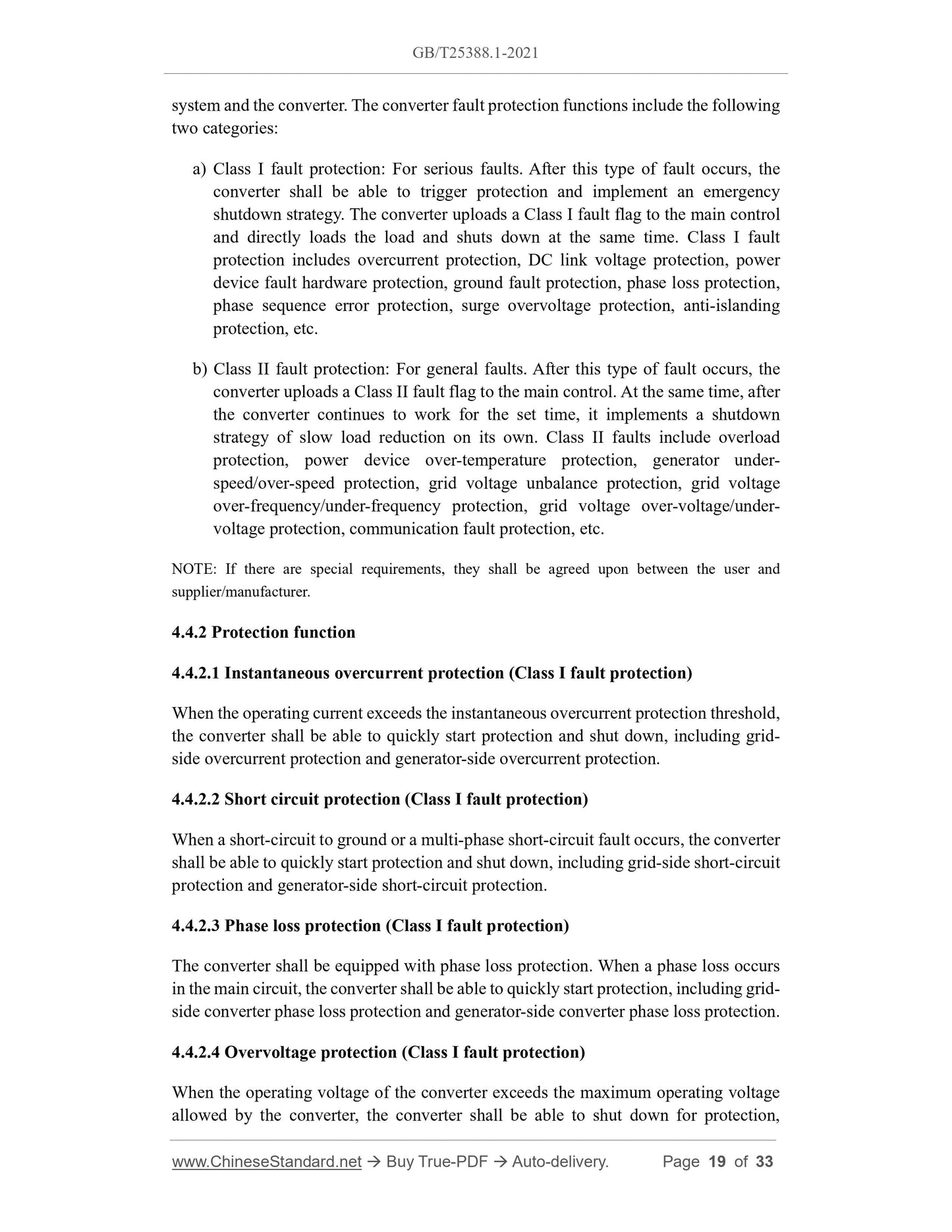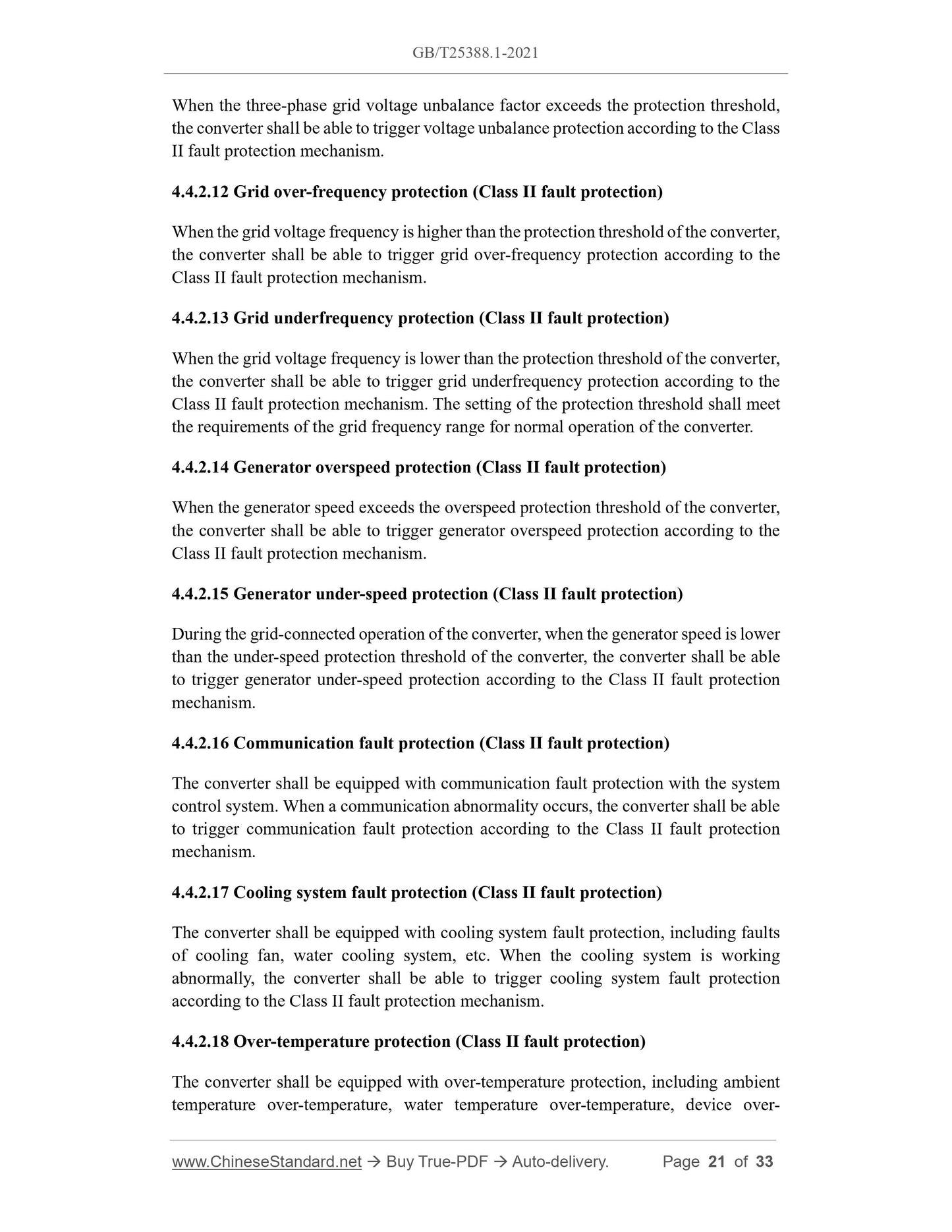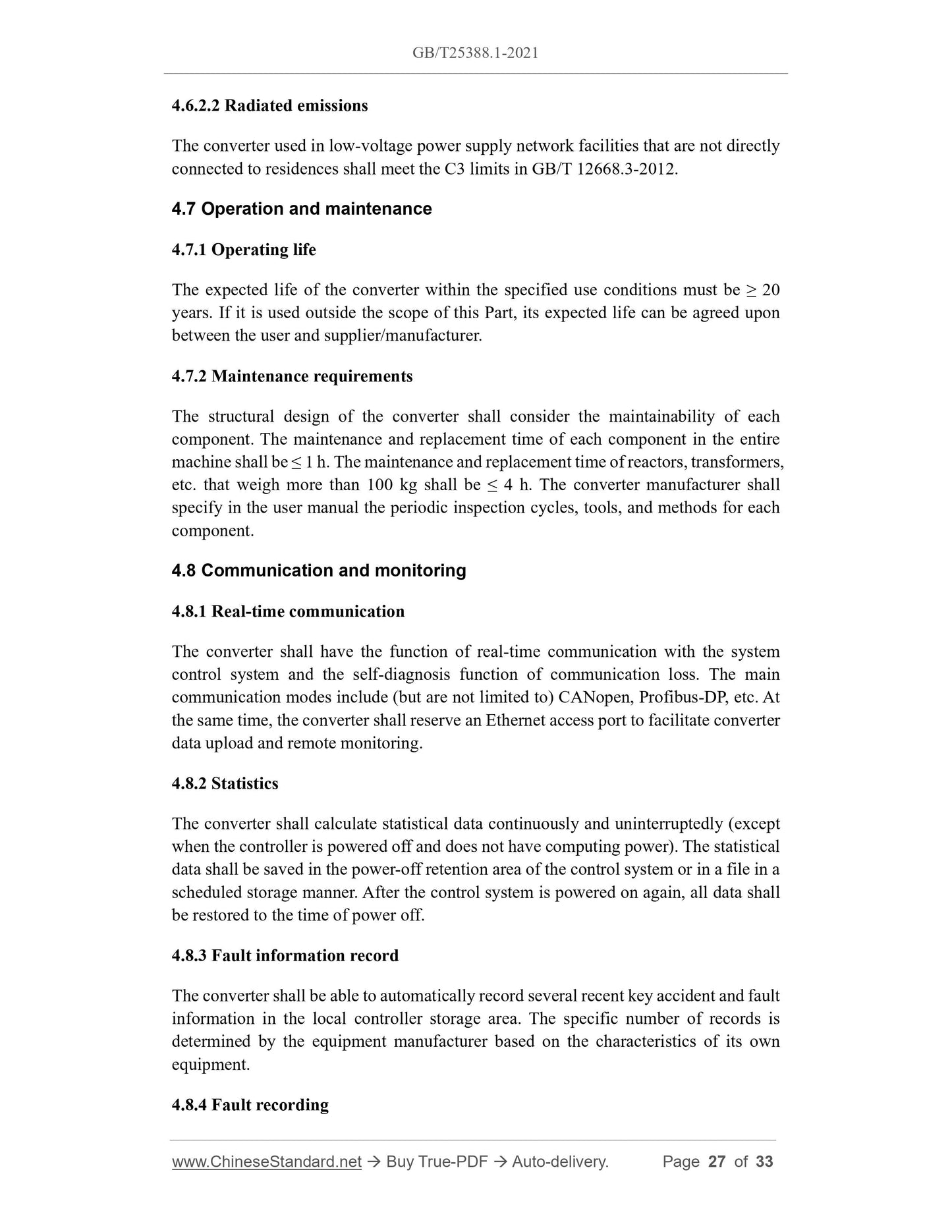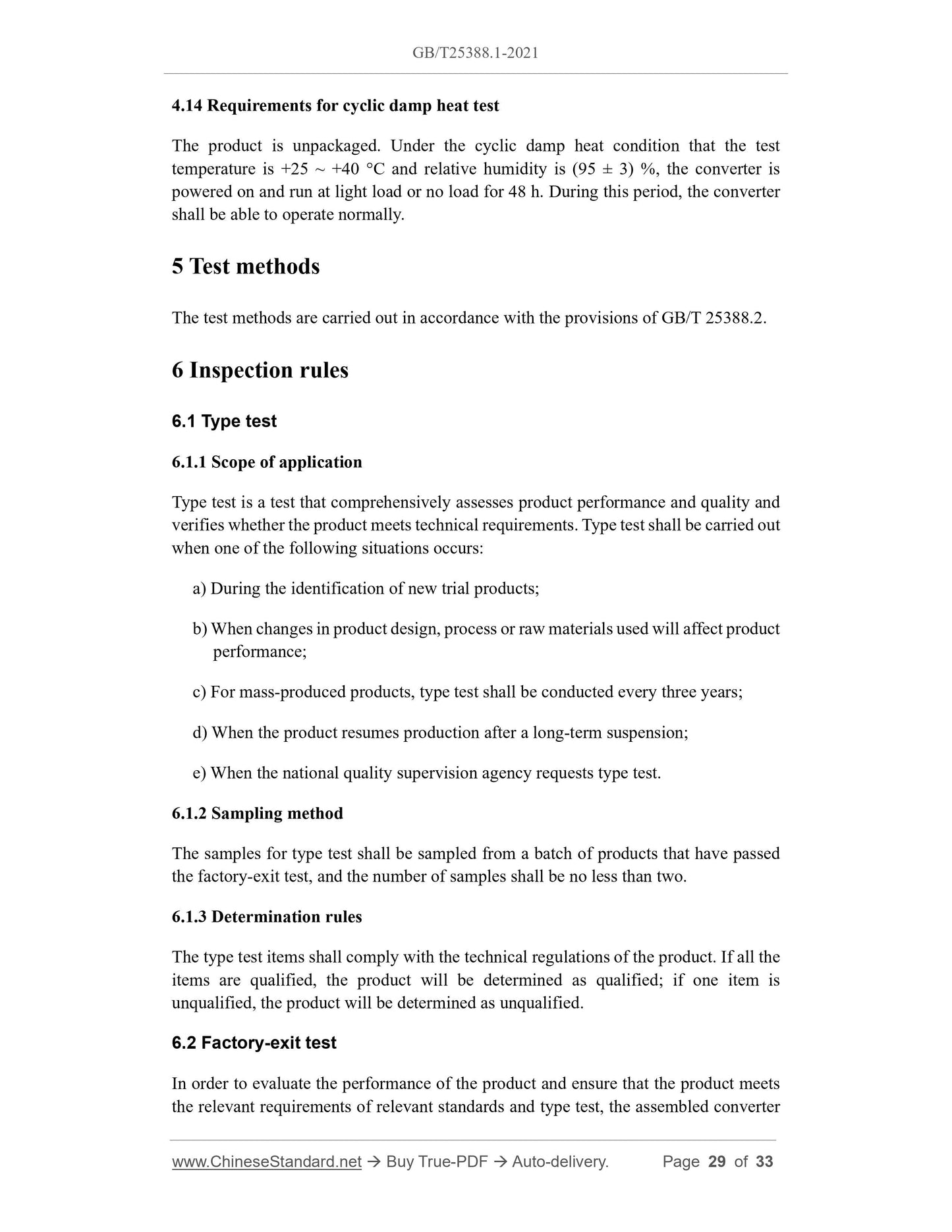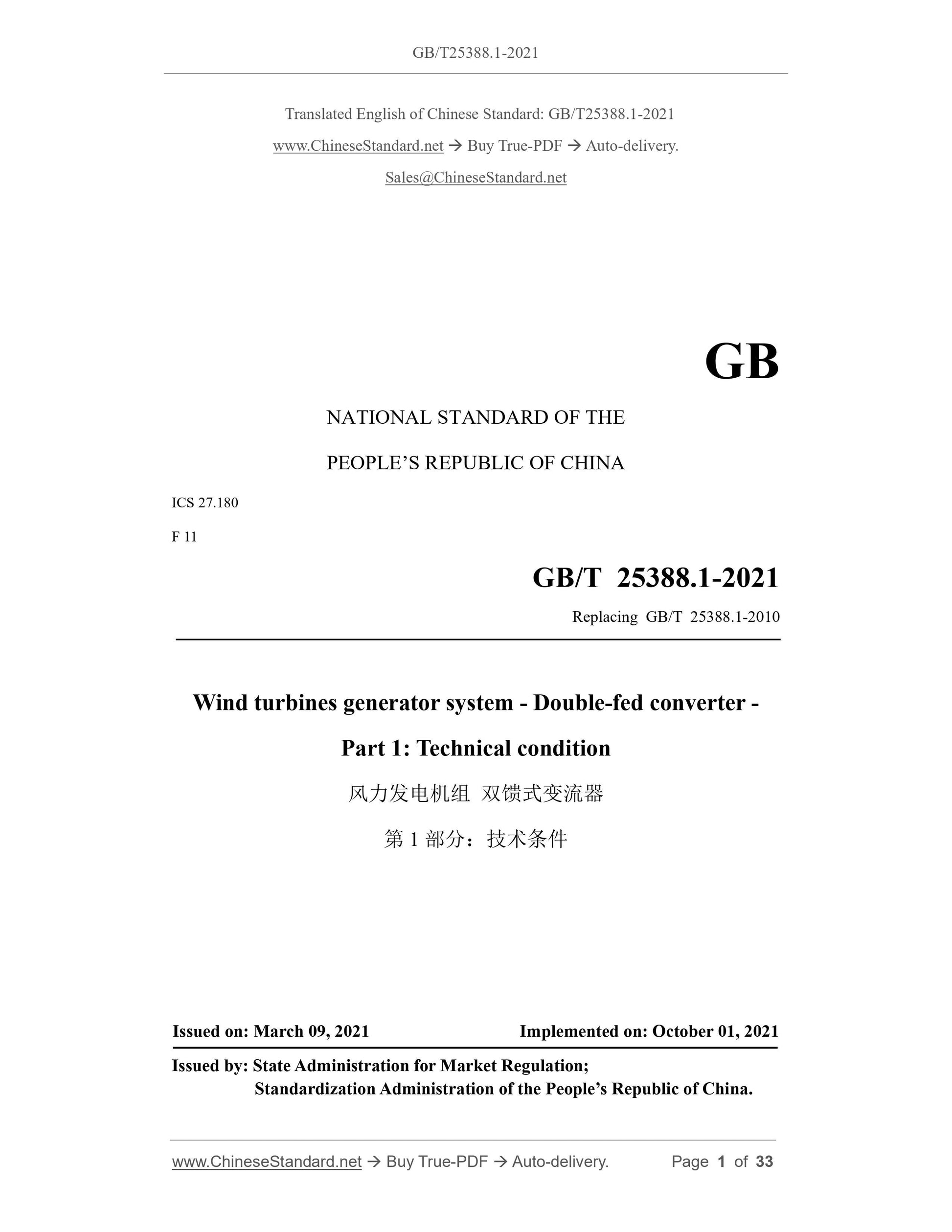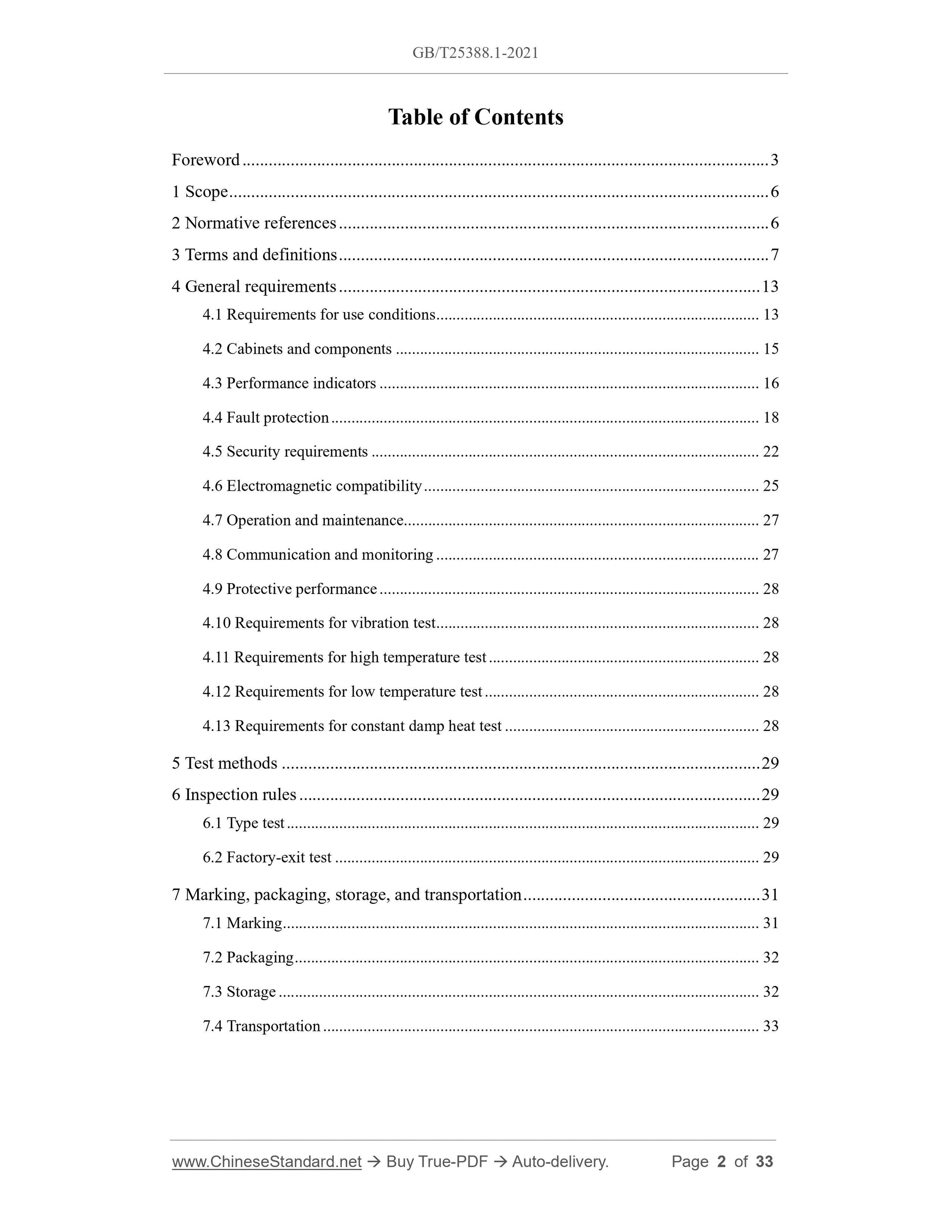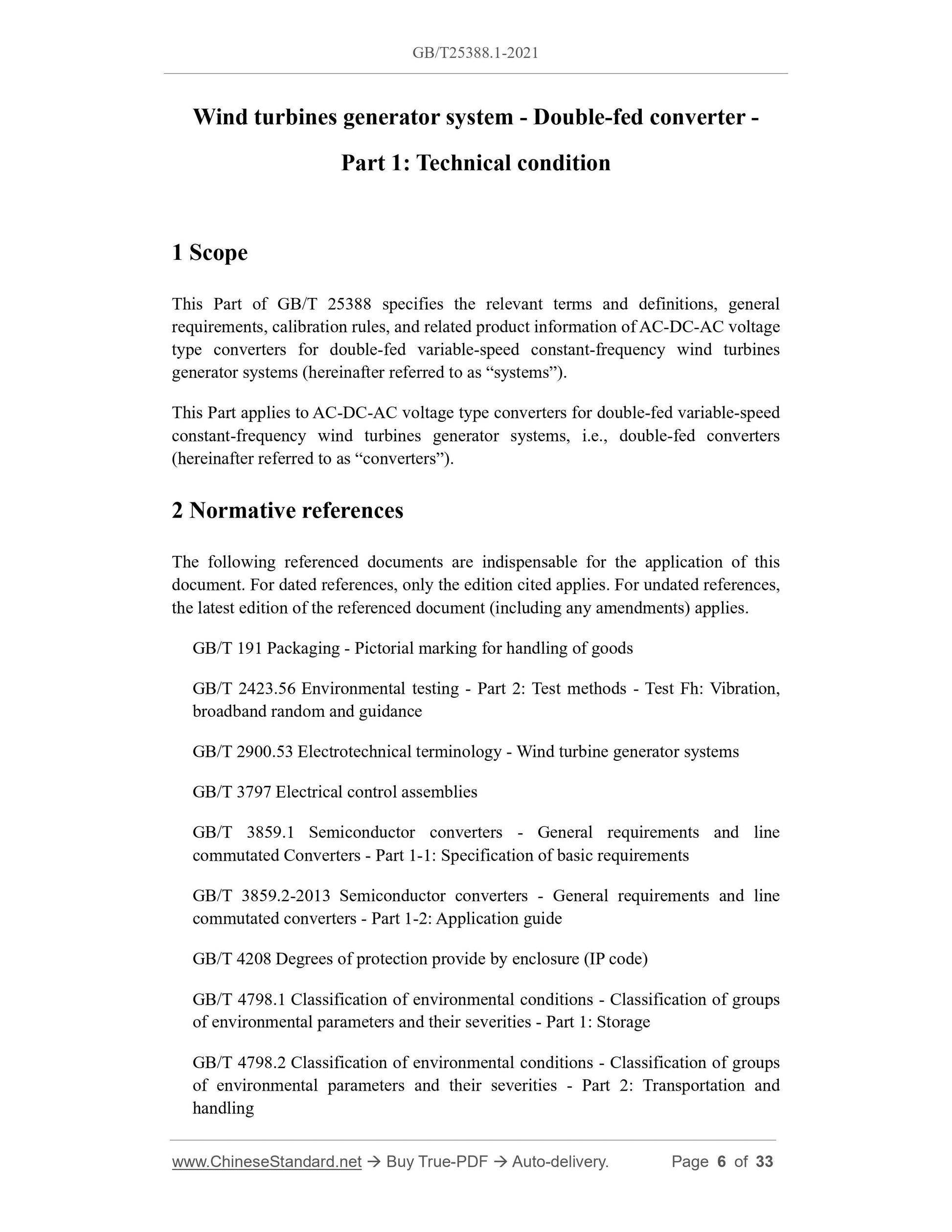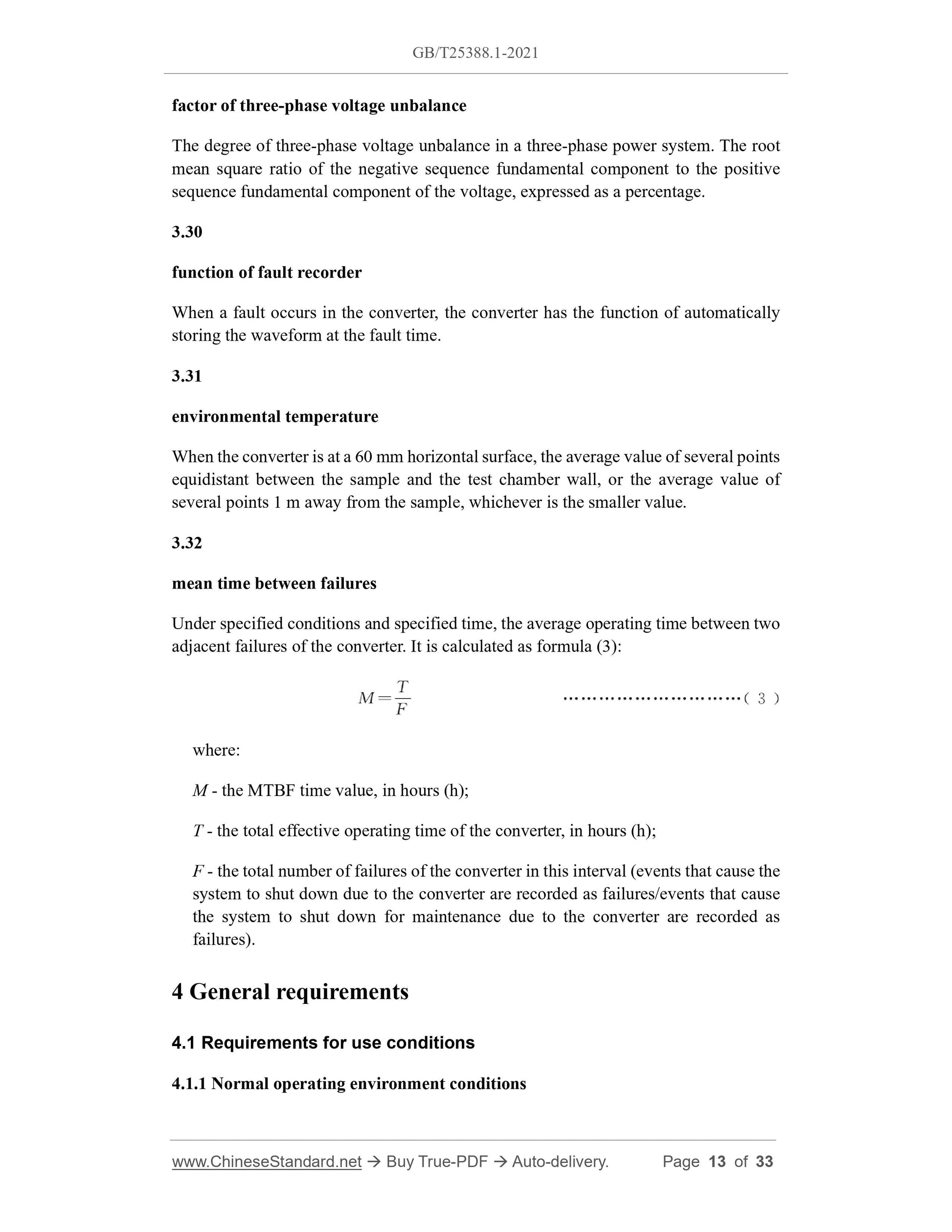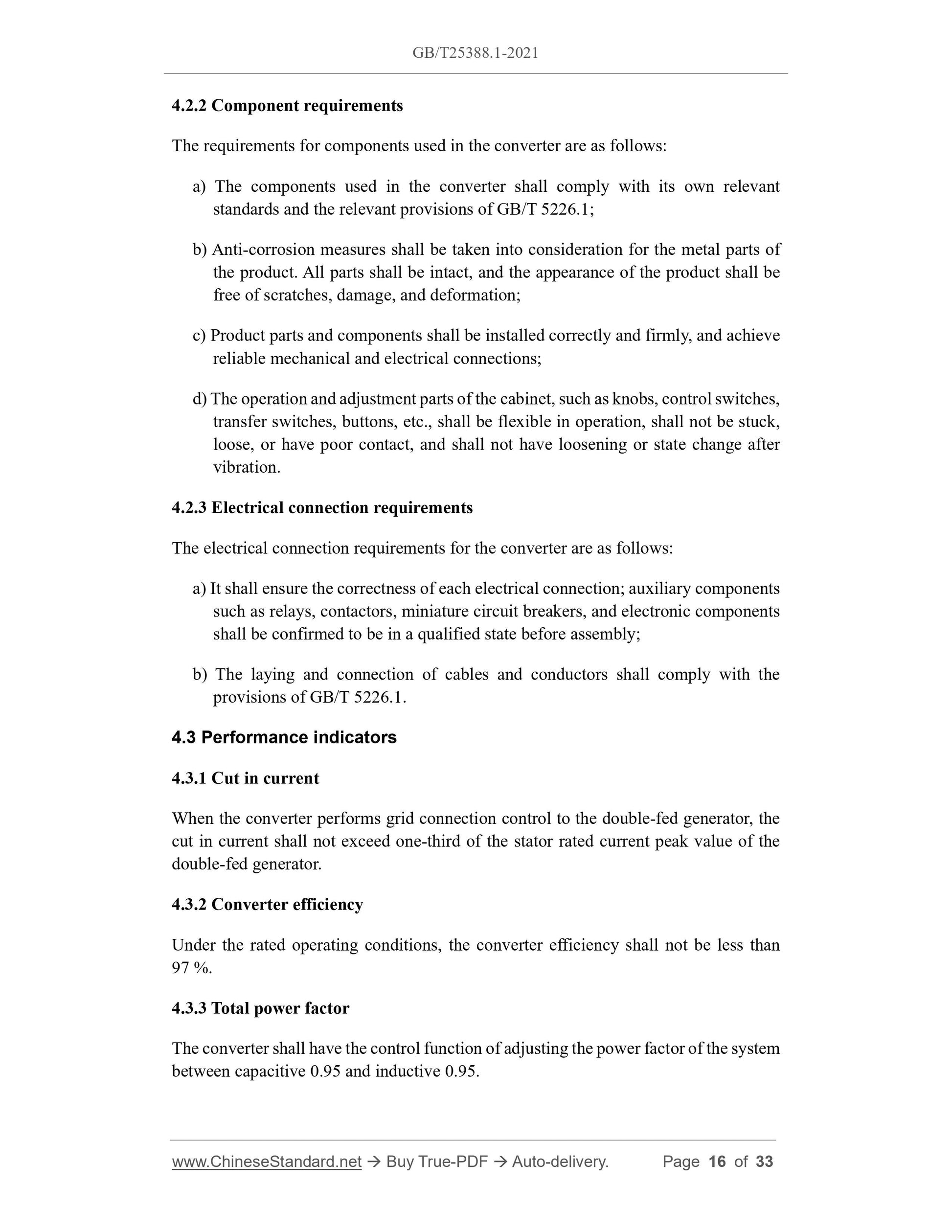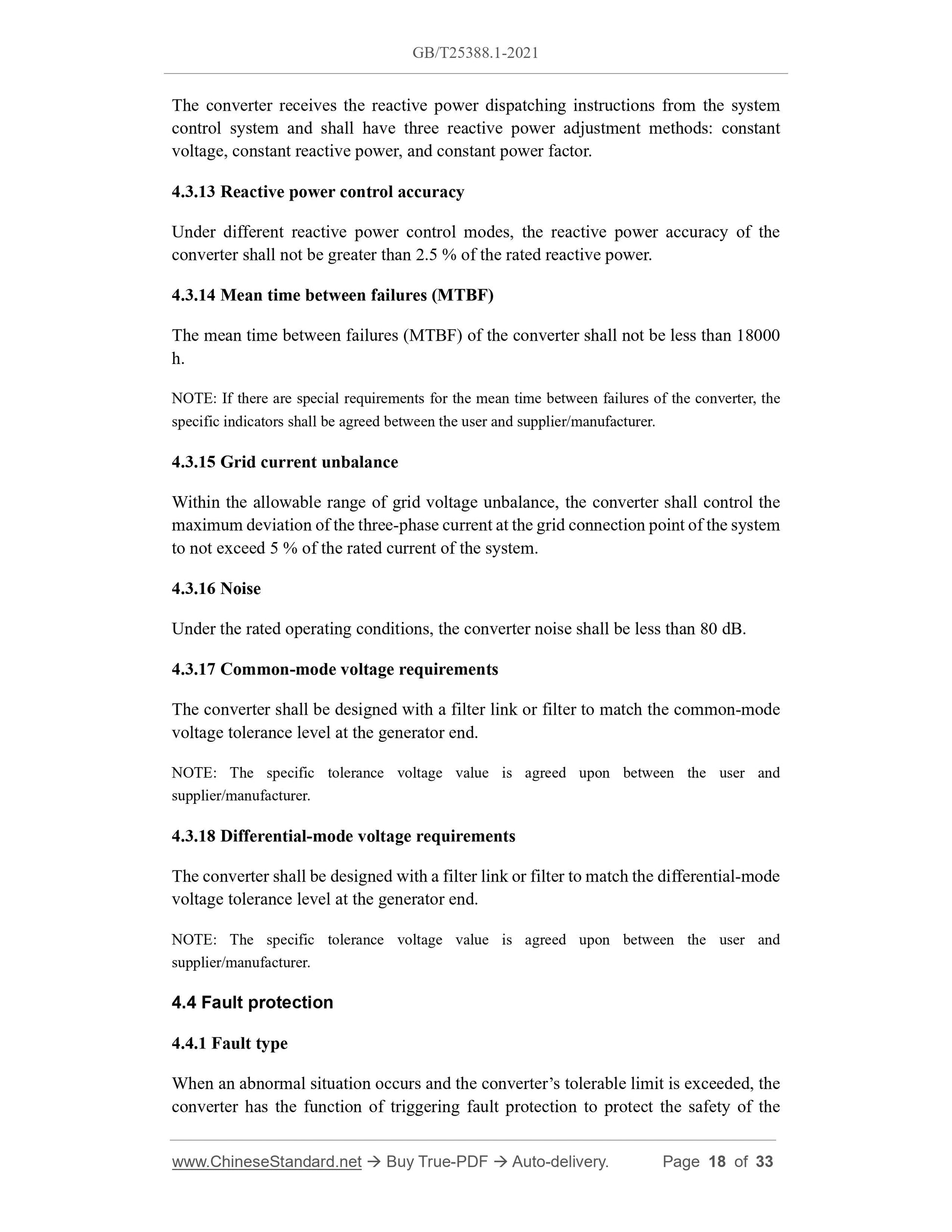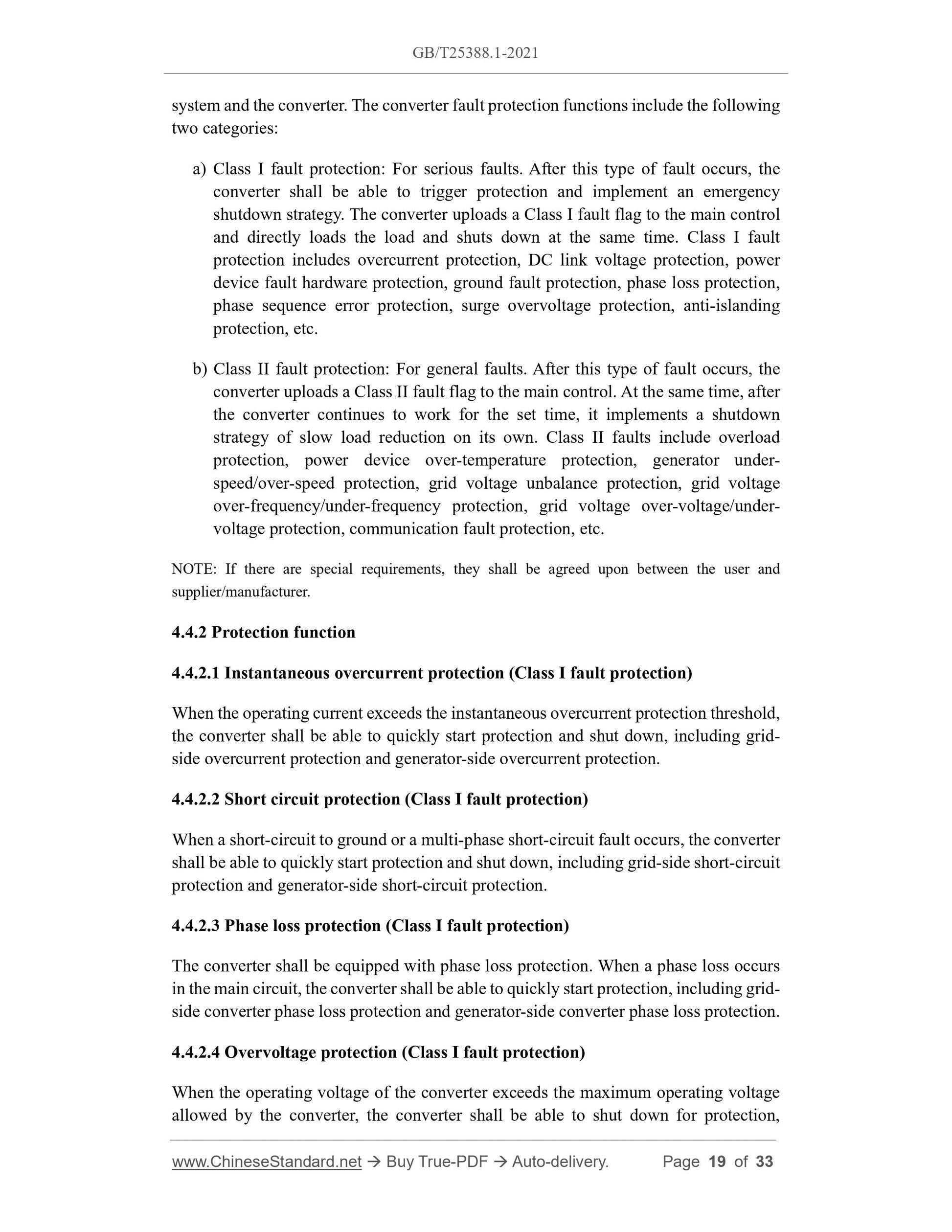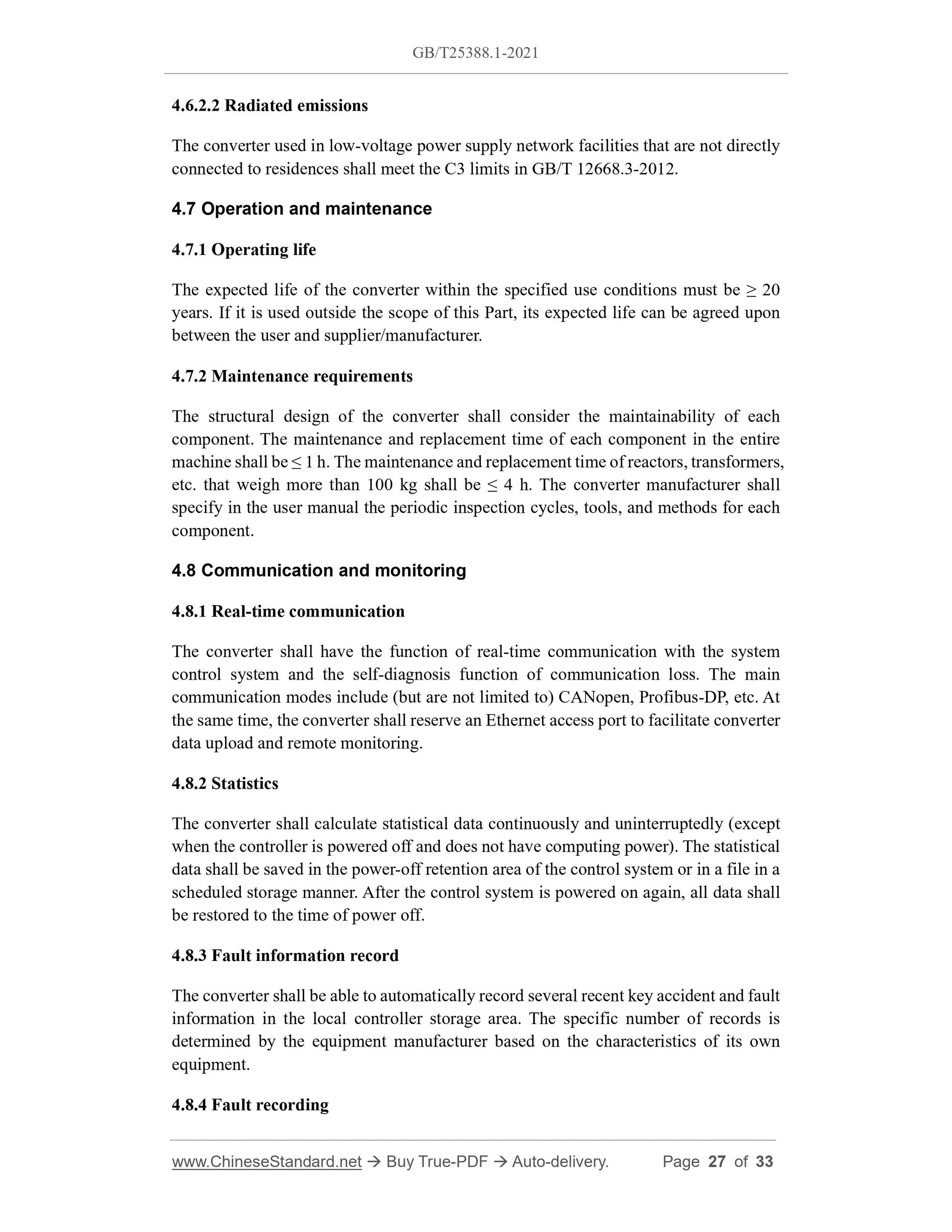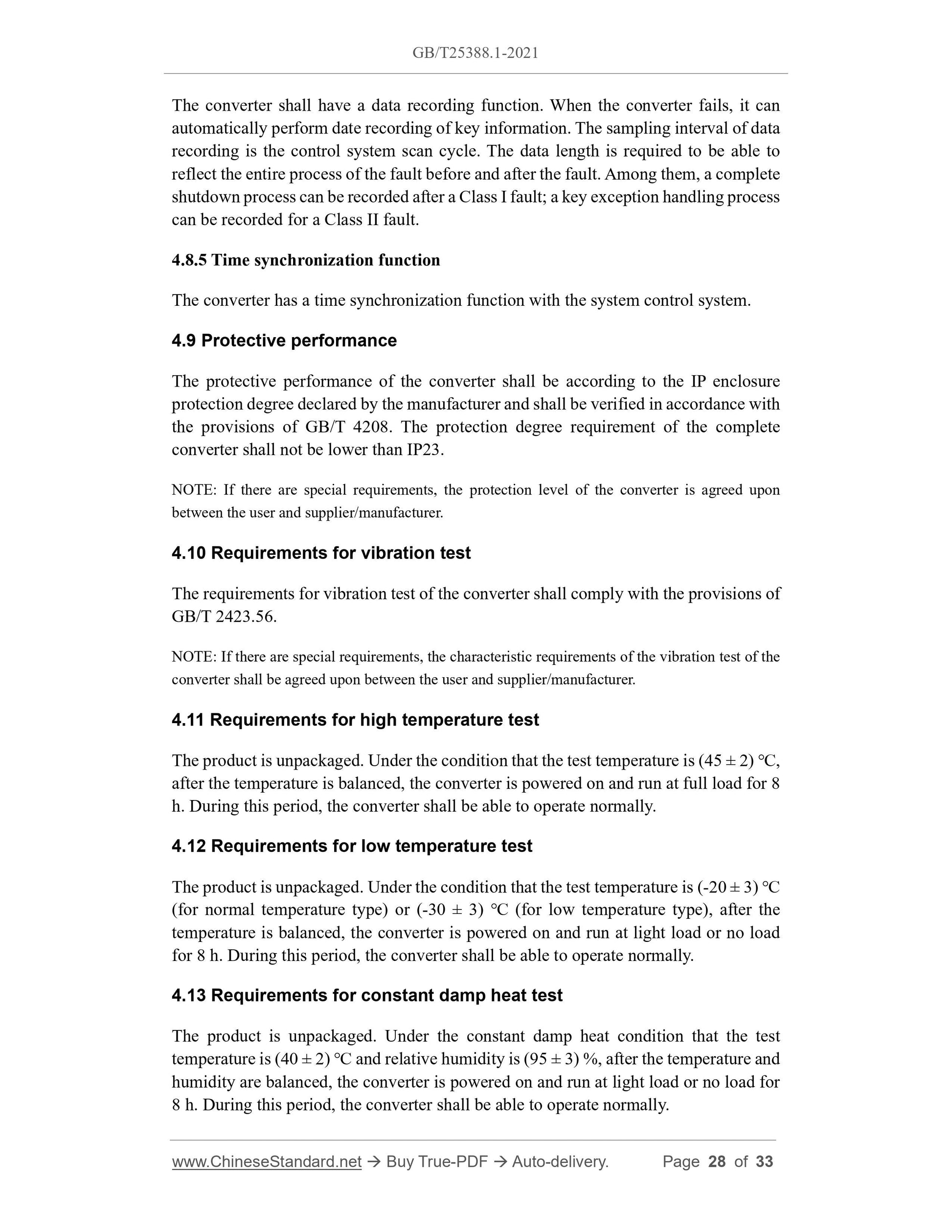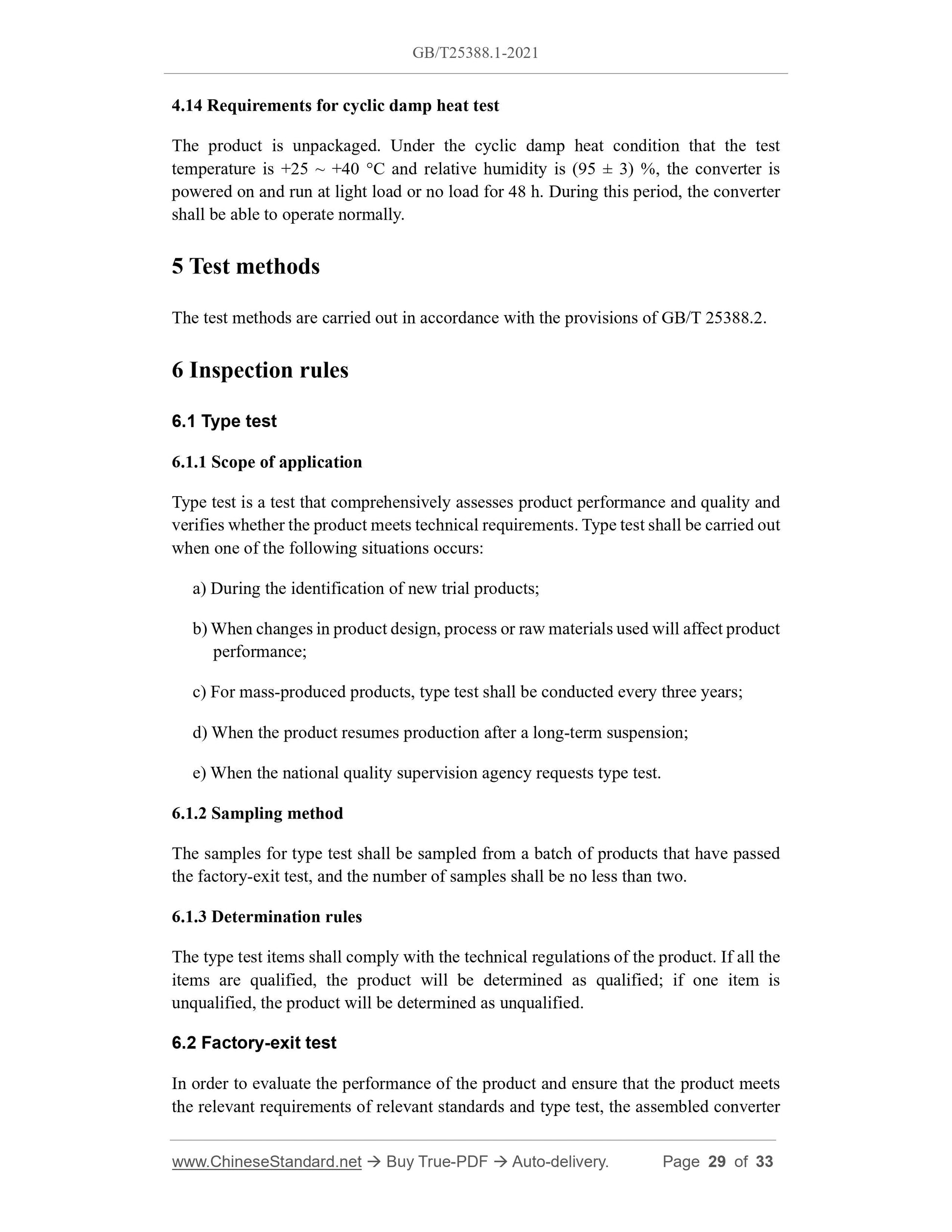1
/
of
12
www.ChineseStandard.us -- Field Test Asia Pte. Ltd.
GB/T 25388.1-2021 English PDF (GB/T25388.1-2021)
GB/T 25388.1-2021 English PDF (GB/T25388.1-2021)
Regular price
$395.00
Regular price
Sale price
$395.00
Unit price
/
per
Shipping calculated at checkout.
Couldn't load pickup availability
GB/T 25388.1-2021: Wind turbines generator system - Double-fed converter - Part 1: Technical condition
Delivery: 9 seconds. Download (and Email) true-PDF + Invoice.Get Quotation: Click GB/T 25388.1-2021 (Self-service in 1-minute)
Newer / historical versions: GB/T 25388.1-2021
Preview True-PDF
Scope
This Part of GB/T 25388 specifies the relevant terms and definitions, generalrequirements, calibration rules, and related product information of AC-DC-AC voltage
type converters for double-fed variable-speed constant-frequency wind turbines
generator systems (hereinafter referred to as “systems”).
This Part applies to AC-DC-AC voltage type converters for double-fed variable-speed
constant-frequency wind turbines generator systems, i.e., double-fed converters
(hereinafter referred to as “converters”).
Basic Data
| Standard ID | GB/T 25388.1-2021 (GB/T25388.1-2021) |
| Description (Translated English) | Wind turbines generator system - Double-fed converter - Part 1: Technical condition |
| Sector / Industry | National Standard (Recommended) |
| Classification of Chinese Standard | F11 |
| Word Count Estimation | 22,222 |
| Issuing agency(ies) | State Administration for Market Regulation, China National Standardization Administration |
Share
